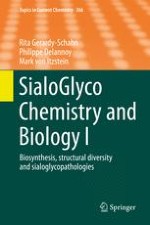2015 | OriginalPaper | Buchkapitel
Why Is N-Glycolylneuraminic Acid Rare in the Vertebrate Brain?
verfasst von : Leela R. L. Davies, Ajit Varki
Erschienen in: SialoGlyco Chemistry and Biology I
Verlag: Springer Berlin Heidelberg
Aktivieren Sie unsere intelligente Suche, um passende Fachinhalte oder Patente zu finden.
Wählen Sie Textabschnitte aus um mit Künstlicher Intelligenz passenden Patente zu finden. powered by
Markieren Sie Textabschnitte, um KI-gestützt weitere passende Inhalte zu finden. powered by
